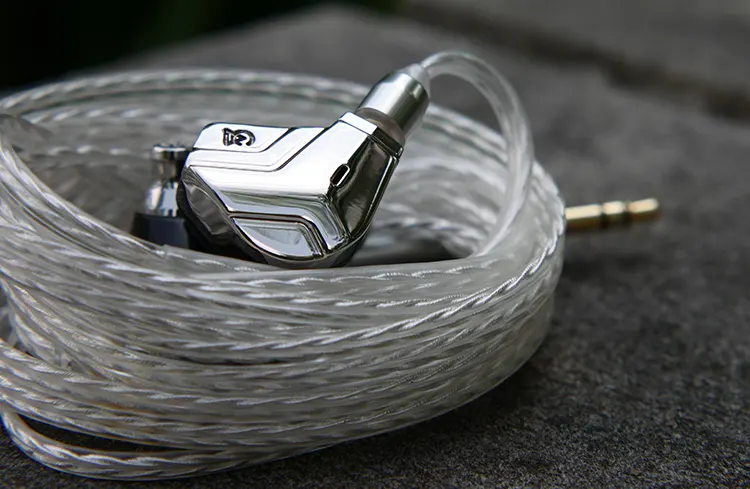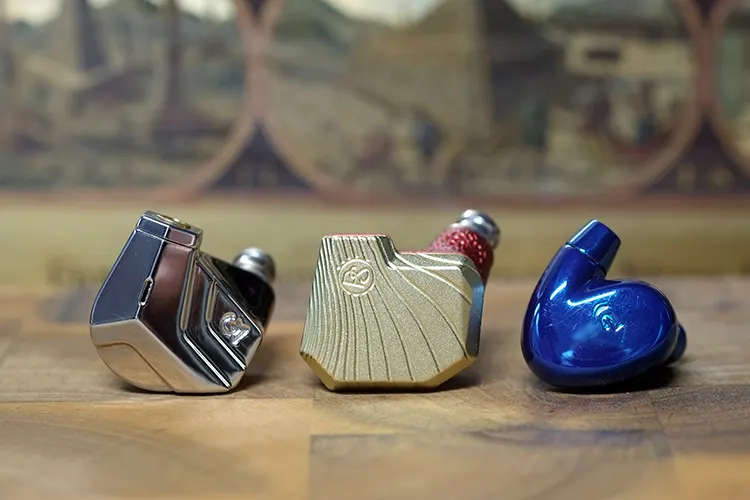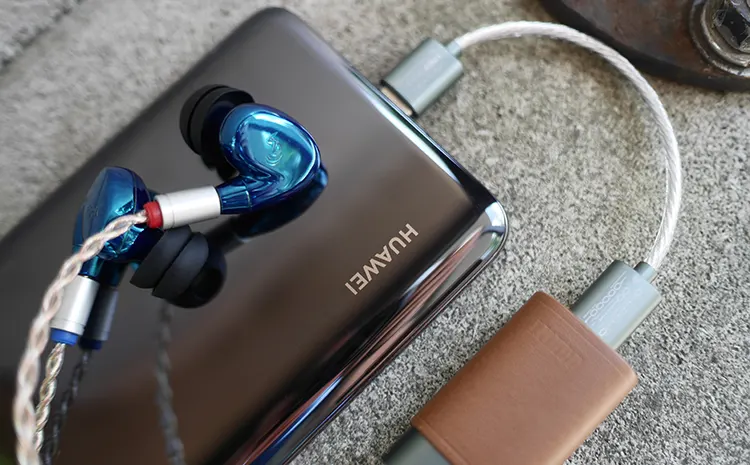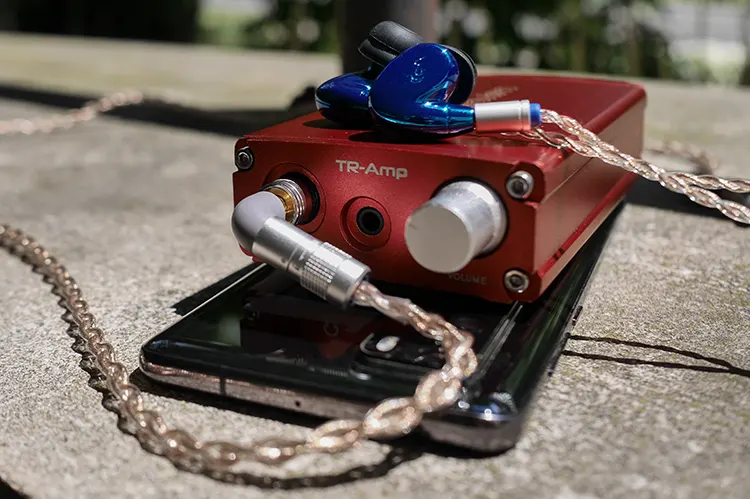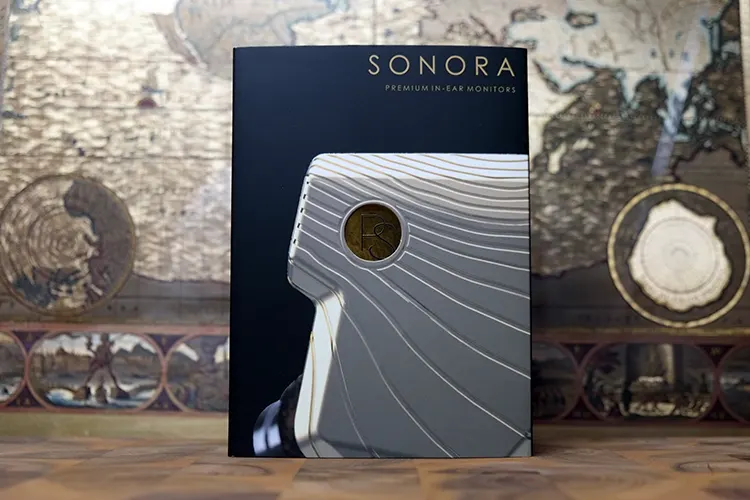Select Comparisons
Campfire Audio Astrolith
Technical
The Astrolith is equipped with two planar magnetic drivers, one 6mm and one 14.2mm. The SONORA has a tri-brid configuration with dual dynamics, quad armatures, and twin electrostatics backed by a 6-way crossover.
The Astrolith is constructed from a mix of 3D-printed acrylic for the ergonomic, low-profile shells with a stainless-steel nozzle and backplate. The SONORA is made entirely from aluminum with a bulkier, more angular design.
The Astrolith is equipped with Campfire Audio’s legendarily durable copper/beryllium MMCX ports while the SONORA utilizes a tellurium copper, rhodium-plated 0.78mm 2-pin setup with impressive conductive qualities.
The Astrolith’s impedance is 8.2Ω @ 1kHz compared to the SONORA’s 10Ω @ 1kHz. The SONORA is more sensitive, but not as source agnostic.
Design
The Astrolith has a traditional body shape with smooth curves and ergonomics that better conform to the shape of the ear. The 3D-printed acrylic inner body is lightweight and perfectly smooth, accented by a polished stainless steel backplate and stainless-steel nozzle.
The sleek Astrolith is contrasted by the SONORA’s seemingly abrupt angles and squared edges. This angular design motif is crafted entirely from aluminum and emphasizes form over function, resulting in notably poorer ergonomics than the Astrolith.
Despite being the heavier of the two (8.5g vs. 8g), the Astrolith’s superior ergonomics make it the more comfortable earphone to wear, regardless of whether you’re listening on the go or sitting in the comfort of your home.
The weight of the Astrolith is better distributed, helped further by the thinner, lightweight cable, making it the one I’d want to wear regardless of the situation.
They provide similar isolation with higher pitched noises coming through more on the Astrolith while midrange frequencies are more prominent through the SONORA.
Both models are beautifully constructed with perfect part alignment and zero excess glue. Durability goes to the SONORA though, since it is an all-metal design and better resists scratches. 3D-printed acrylic is more likely to be damaged when dropped, and the polished steel faceplate is prone to physical blemishes.
The SONORA’s cable is considerably more impressive from a visual and construction standpoint. Its boutique status is obvious from the thickness of the cable to the custom-like hardware and personalized y-split that reflects the design and coloring of the earpieces.
The Astrolith is equipped with Campfire Audio’s upgraded metal Time Stream cables. They are thinner and lighter than the SONORA’s Copper XL cable, which is more to my tastes, but it’s missing the perception of quality I get from PLUSSOUND’s cable.
Bass Performance
Campfire’s Astrolith and its big, 14.2mm planar driver, provide a more visceral bass experience than the dual isobaric dynamics in the SONORA. The Astrolith digs deeper with more mid-bass presence giving it a warmer tonality with a heavier slam.
Both models are obscenely quick, but the SONORA’s drivers feel snappier with the initial hit having more definition and their decay being more rapid. It gives the SONORA an edge when tossing them into chaotic tracks with speedy basslines.
Texturing is excellent with both models adequately replicating grunge and grit. If I were to give one an edge, it would go to the SONORA which provides just a hint more information.
Mids Performance
The midrange of the SONORA is cooler and more forward with a more distant default vocal positioning. The result is that vocals and instruments remain more prominent on excessively bassy or treble-heavy tracks.
Midrange clarity is better on the SONORA versus the Astrolith with fine details being more easily intelligible. The SONORA’s midrange is also thicker with more body and bravado to the vocals.
Sibilance management on both is excellent. They are both quite forgiving of aggressive ‘tees and esses’, smoothing out tracks with aggressively uncomfortable midrange mastering.
Treble Performance
The dual electrostatic drivers in the SONORA have a more even balance of presence and brilliance region emphasis and display a minor extension advantage over the Astrolith’s compact 6mm planar.
That said, the Astrolith is a bit more aggressive in the brilliance region with its presentation of shimmer and sparkle being sharper and more direct.
Each configuration is quick and well-controlled without displaying unwanted splash or looseness. Notes are leaner from the Astrolith giving the impression of additional air and spaciousness.
The detail and clarity are also impressive when comparing the two. Micro details are crisp and well-defined, but the SONORA does a better job keeping them at the forefront, whereas the Astrolith’s added warmth and low-end presence can distract from them.
Staging Performance
Both models excel in their staging presentation, offering a vast expanse that tracks can play within. The SONORA’s staging is more rounded and even with the Astrolith skewing towards width compared to its presentation of depth and height.
Imaging is smooth and off-center and outer-edge accuracy is fantastic on both models with the SONORA offering a hint of better accuracy than the Astrolith.
When using them in FPS and other shooter/combat games, the SONORA’s presentation better matched what was on screen, though the differences were minor.
While the Astrolith layers and separates individual track elements quite well, the tri-brid setup of the SONORA gives it a notable advantage. It offers a better sense of depth and spaciousness, leading to a more dynamic listening experience.
oBravo Clio
Technical
oBravo’s Clio features a hybrid driver configuration with a 9mm dynamic and a 6mm AMT tweeter. In contrast, the SONORA uses a tri-brid configuration with dual isobaric dynamics, four balanced armatures, and two electrostatic tweeters.
Both models are all-metal, though they use very different materials. oBravo went with something traditionally found in musical instruments, brass, while the SONORA is aluminum.
PLUSSOUND chose a common 0.78mm 2-pin plug style for the SONORA while oBravo utilizes a proprietary version of MMCX called oB-MMCX.
While neither model includes a stock cable I’d want to replace anytime soon, it will be easier for the SONORA given the abundance of 0.78mm 2-pin cables on the market.
The sensitivity of the Clio is 105 dB @ 1kHz compared to the SONORA’s 110 dB @ 1kHz. The Clio’s impedance is 16Ω @ 1kHz compared to the SONORA’s 10Ω @ 1kHz.
The SONORA is easier to bring up to volume, but also more picky about the source.
Design
PLUSSOUND and oBravo have gone in completely different design directions. The SONORA is brash and flashy with a look that draws attention, while the Clio is considerably more subtle and subdued, save for its chromatic blue colorway.
The Clio’s shells are small with a simple heart or bean-shaped design that wouldn’t feel out of place on a more budget-oriented set. It is well-built with an acceptable fit and finish, but the seams between the two halves of the shell are uneven.
In contrast, the SONORA’s design is considerably more complicated with ample texturing that differs from the front and rear halves of the shell. Fit and finish are also flawless with excellent alignment between all components.
Despite being a third of the size with a simpler driver configuration, the Clio is more than half a gram heavier (8g vs 8.6g). This is noticeable in the ear, but thanks to the size and shape, the Clio is the more comfortable product.
It slots more naturally into the outer ear and requires fewer adjustments to address a broken seal. Isolation levels are similar, but the Clio is more effective in noisy environments because it filters out midrange tones better than the SONORA.
The Clio’s cable is a downgrade from the SONORA’s in terms of visual appeal and hardware, but it has a few features that I value.
It is thinner and lighter with better handling, but more importantly, it features a modular plug system that enables the user to swap between single-ended and balanced configurations.
The SONORA’s Copper XL cable has more unique and high-quality hardware, alongside thicker, more durable wiring, but you’re required to choose your termination at the time of purchase and need a whole new cable, or adapters, to change it.
Bass Performance
The low-end performance of the Clio’s 9mm dynamic driver is good, but the dual isobaric dynamic configuration of the SONORA has some distinct advantages. Mid- to sub-bass balance on the SONORA is better, though overall emphasis goes to the Clio.
They reach lower depths and hits are more impactful as they impart a more satisfying visceral response. The SONORA’s configuration also produces more micro-detail and provides additional texture with grungy basslines.
The SONORA’s dynamics are also faster and offer improved note control. The Clio’s dynamic handles congested tracks well enough, but individual notes provide a lower level of definition, most obvious on tracks that are overly busy and congested.
While the low-end performance of the Clio is great, the Astrolith simply does everything just a little bit better.
Mids Performance
The midrange of each model is well-balanced with the rest of the signature. Both did a great job keeping vocals and instruments clear and unmasked by the treble or bass.
The SONORA has a thicker, fuller-bodied midrange than the Clio. Despite this, they offer similar levels of detail and clarity with the Clio having the advantage.
The SONORA is more natural sounding though. The Clio’s timbre can be dry and somewhat metallic at times, leaving it unnatural compared to the SONORA.
When it comes to managing sibilance, both models do a fantastic job. The Clio is one the best I’ve heard for curbing this quality, with the SONORA sliding in closely behind.
Treble Performance
The Clio’s 6mm AMT is a fantastic performer, competing with the SONORA’s dual electrostats.
The Clio is more presence region biased with less brilliance region sparkle. Its AMT sounds less natural and is leaner than the SONORA’s electrostatic drivers but comes across a more rapid in its decay qualities.
The SONORAs note presentation is smoother with more natural timbre and mildly improved note definition and control. Neither is fatiguing, even at higher volumes than I generally listen.
Th extension seems similarly excellent on both models, well exceeding what I’m capable of hearing.
Staging Performance
Both models excel in staging with a default vocal positioning just outside the ear. From there, they offer a similar impression of width, depth, and height, with a well-rounded soundscape.
Channel-to-channel movement is nuanced and accurate from each earphone, with the SONORA offering more precise off-center movement. Their performance at the edges of their respective stages is about on par.
Other technical aspects like layering and instrument separation are also positives with the pair, though I found the SONORA more technically adept.
It gave off a great sense of depth and the instruments were slightly more defined, resulting in a more lively and dynamic presentation.
My Verdict
Given PLUSSOUND’s relative brevity in earphone manufacturing, it is somewhat surprising that they skipped the budget market entirely, tackling the midrange with their first three outings, and high-end with their most recent releases. It is even more surprising they have been so successful at it.
The SONORA does not feel out of place or underwhelming compared to other kilo-buck earphones from more experienced IEM manufacturers. This is a testament to their commitment to providing their customers with high-quality, competitive products, done their way.
From the packaging and accessories to the visual design, to the materials and overall sound tuning, the SONORA deserves to be discussed in the same breath as other premium products. It is a pleasantly mature ownership experience from every angle.
While the ergonomics could still use some tweaking given they’re far from the most comfortable and secure earphones out there, that’s about the only complaint I can levy at them.
The sound quality and general tuning are stupendous and give the SONORA a jack-of-all-trades quality, without failing in any one area.
If you’re in the market for a unique, high-end earphone and want something visually striking with audio quality to match, PLUSSOUND’s SONORA might be just what you’re after.
PLUSSOUND SONORA Technical Specifications
- Frequency Response: 10Hz–40kHz
- Sensitivity: 110 dB @ 1 kHz
- Impedance: 10Ω @ 1 kHz





